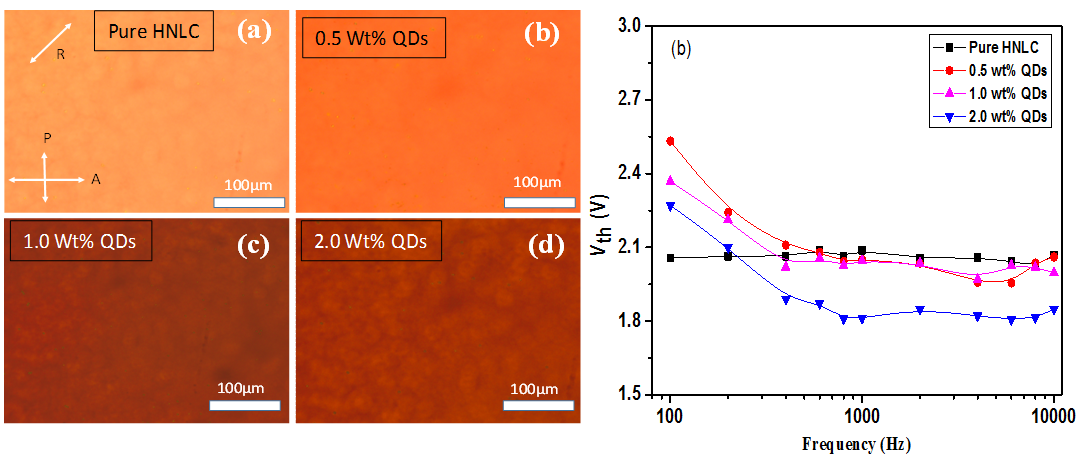Quantum dots dispersed hockey stick nematic liquid crystal: studies on dielectric permittivity, elastic constants and electrical conductivity
Jitendra Kumar, Veena Prasad and Monika Manjunath
J. Mol. Liq., 266,10-18 (2018)

Effect of doping of octadecylamine functionalized CdSe/ZnS core-shell quantum dots (QDs) on the physical properties such as dielectric permittivity, Freedericksz threshold voltage (Vth), Frank elastic constants and electrical conductivity of a hockey stick nematic liquid crystal (HNLC) has been investigated. The Vth of these nanocomposites are found to be reduced when compared to that of pure HNLC. For the low concentrations of QDs, i.e. 0.5 and 1 wt%, the dielectric anisotropy and elastic constants (splay and bend) are slightly reduced. However, on increasing the concentration of QDs to 2 wt%, both dielectric anisotropy and elastic constants are increased significantly. Doping of QDs into HNLC causes a Debye-type relaxation process in the low frequency region (f 200 Hz) and this frequency increases with increasing concentration of QDs. The electrical conductivity of the nanocomposites is increased by an order of magnitude as compared to pure HNLC. At low frequencies, a strong drop in the conductivity was observed which indicates the accumulation of the ionic impurities at the interface between the sample and electrode which in turn causes electrode polarization effect. The relaxation process observed for homeotropically aligned samples, both pure as well as its nanocomposites in the high frequency region (50 - 300 kHz), is due to the molecular rotations around their short axes. The relaxation frequency of this process shifts towards the lower value due to the presence of QDs. Thus, one can use QDs to fine tune the physical properties of LC materials which are of importance from application point of view.
